What did you build today (Pictures) ?
-
@mfalkvidd Can't have too much redundancy there...
-
Made this 12 button keypad. Requires only one analog pin to read which button is pressed, and any button press can also wake an arduino from sleep:
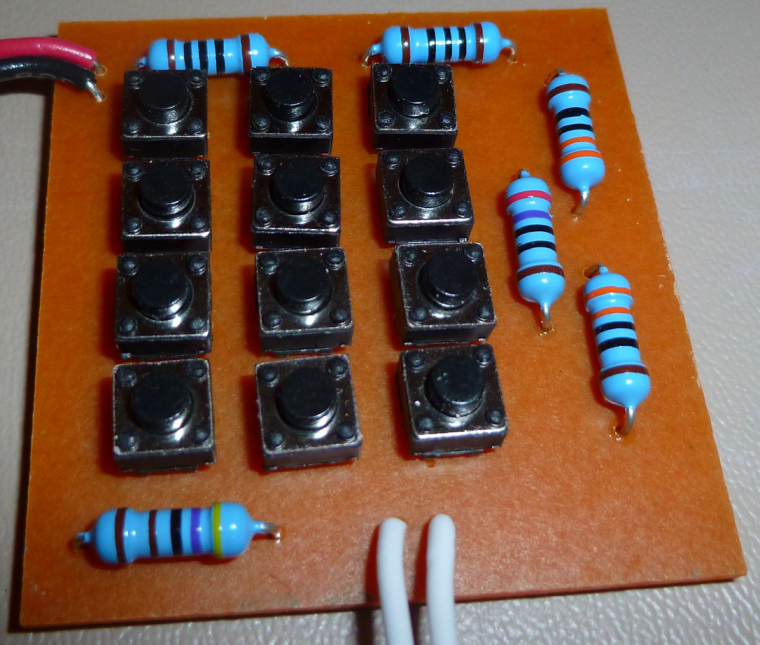
Consumes no power when no button is pressed. -
Made this 12 button keypad. Requires only one analog pin to read which button is pressed, and any button press can also wake an arduino from sleep:

Consumes no power when no button is pressed.Here's a thread which covers it in more detail: https://forum.mysensors.org/topic/8936/6-8-buttons-battery-remote-node/36
-
Here's a thread which covers it in more detail: https://forum.mysensors.org/topic/8936/6-8-buttons-battery-remote-node/36
@neverdie what happens when you press two or more buttons ??
-
@neverdie what happens when you press two or more buttons ??
@rozpruwacz Well, with the sketch I wrote (see link), you'd get the value of the first button pressed, and that's it. You'd have to release all the buttons before selecting a new button.
In terms of the hardware itself, there's an order of precedence to the buttons, so at all times you'd only be able to read the value of a single button, even if more than one button were pressed. In a multi-button press scenario, the buttons of lower precedence are ignored.
It's a good question though. If you needed to read more than one button simultaneously (such as, for example, move an RC car forward and turn right at the same time), this wouldn't do it. Seems like such a circuit would be possible though, maybe even one based on simple voltage dividing like this one. Somehow you'd need to sum unique resistances for each button pushed instead of just choose a single resistance. I can imagine doing that for a few buttons on an arduino, but maybe not as many as 12.
-
@rozpruwacz Well, with the sketch I wrote (see link), you'd get the value of the first button pressed, and that's it. You'd have to release all the buttons before selecting a new button.
In terms of the hardware itself, there's an order of precedence to the buttons, so at all times you'd only be able to read the value of a single button, even if more than one button were pressed. In a multi-button press scenario, the buttons of lower precedence are ignored.
It's a good question though. If you needed to read more than one button simultaneously (such as, for example, move an RC car forward and turn right at the same time), this wouldn't do it. Seems like such a circuit would be possible though, maybe even one based on simple voltage dividing like this one. Somehow you'd need to sum unique resistances for each button pushed instead of just choose a single resistance. I can imagine doing that for a few buttons on an arduino, but maybe not as many as 12.
@neverdie I'm asking because I Was trying to do something like this. If there was a resistor values set that would make all 2**n (where n is the number of buttons) choices spaced enough in voltage domain it would work, but I couldn't find such a set ...
-
@neverdie I'm asking because I Was trying to do something like this. If there was a resistor values set that would make all 2**n (where n is the number of buttons) choices spaced enough in voltage domain it would work, but I couldn't find such a set ...
@rozpruwacz said in What did you build today (Pictures) ?:
@neverdie I'm asking because I Was trying to do something like this. If there was a resistor values set that would make all 2**n (where n is the number of buttons) choices spaced enough in voltage domain it would work, but I couldn't find such a set ...
That's why it might work if you needed it for only a few buttons. With only 1024 units of voltage, seems like you'd quickly run out of resolution if you tried to do more.
-
I built my first MysX daughter board which I will connect to my EasyPCB to drive a led strip.
This will power everything from 12v so 2 things. Power main board and dim LED strip.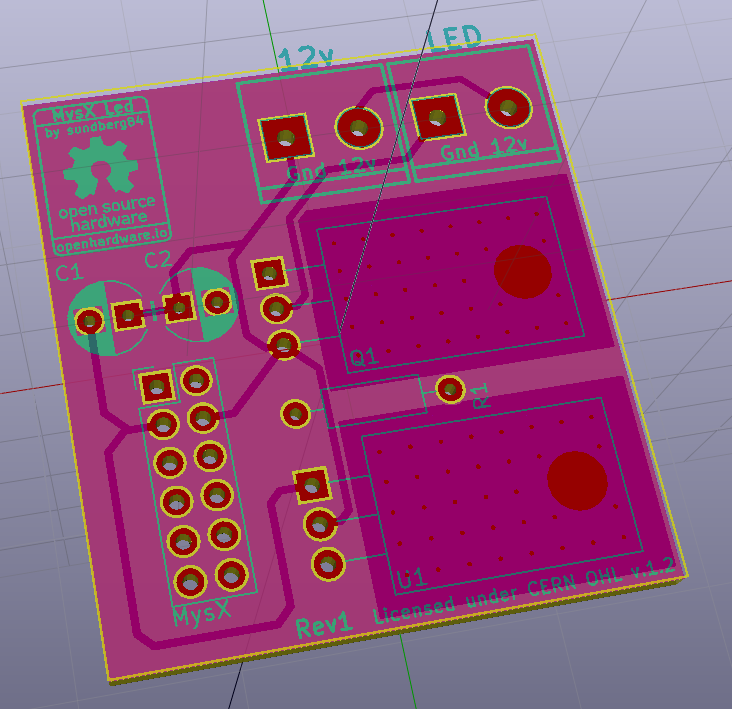
-
I built my first MysX daughter board which I will connect to my EasyPCB to drive a led strip.
This will power everything from 12v so 2 things. Power main board and dim LED strip.
Do anyone knows it the back of a TO-220 always is connected to GND and if this should be connected to the board GND as well? Currently I have a exposed copper as a heatsink but this copper is not connected to GND.
-
Depends on the manufacturer / device type.. So look in the datasheet of the one that you want to use.
@tbowmo
Thank you - I want to be able to use them all/different (ie. 5v, 3.3v, different manufacturer) so I wont connect it and just use it as a heatsink. -
Depends on the manufacturer / device type.. So look in the datasheet of the one that you want to use.
-
Made this two-button nRF52832 remote control:
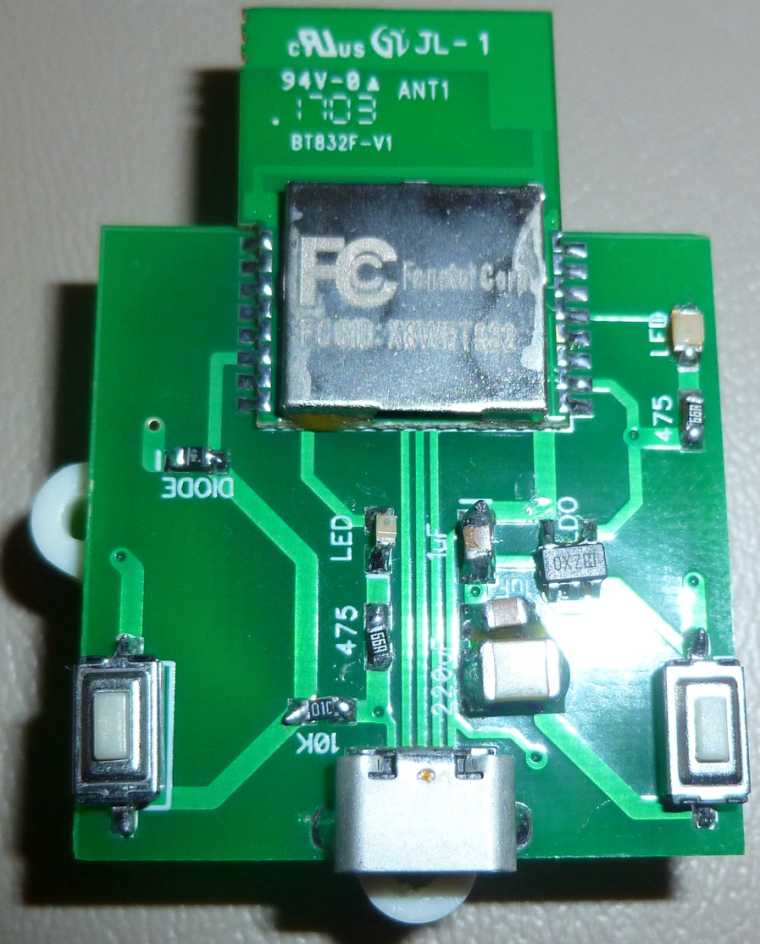
It only draws power when one of the buttons is pressed. -
nice :) what about range of the nRF52832 ? is it better than nfr24l01+ with pcb antenna ? I had problems with nrf24 and now I'm trying with rfm69. From first tests I can tell that it has much better range - but it is slightly larger and requires an antenna ...
-
nice :) what about range of the nRF52832 ? is it better than nfr24l01+ with pcb antenna ? I had problems with nrf24 and now I'm trying with rfm69. From first tests I can tell that it has much better range - but it is slightly larger and requires an antenna ...
@rozpruwacz said in What did you build today (Pictures) ?:
is it better than nfr24l01+ with pcb antenna ?
yes
-
Assembled and tested final version of LoRa Leak Detector:
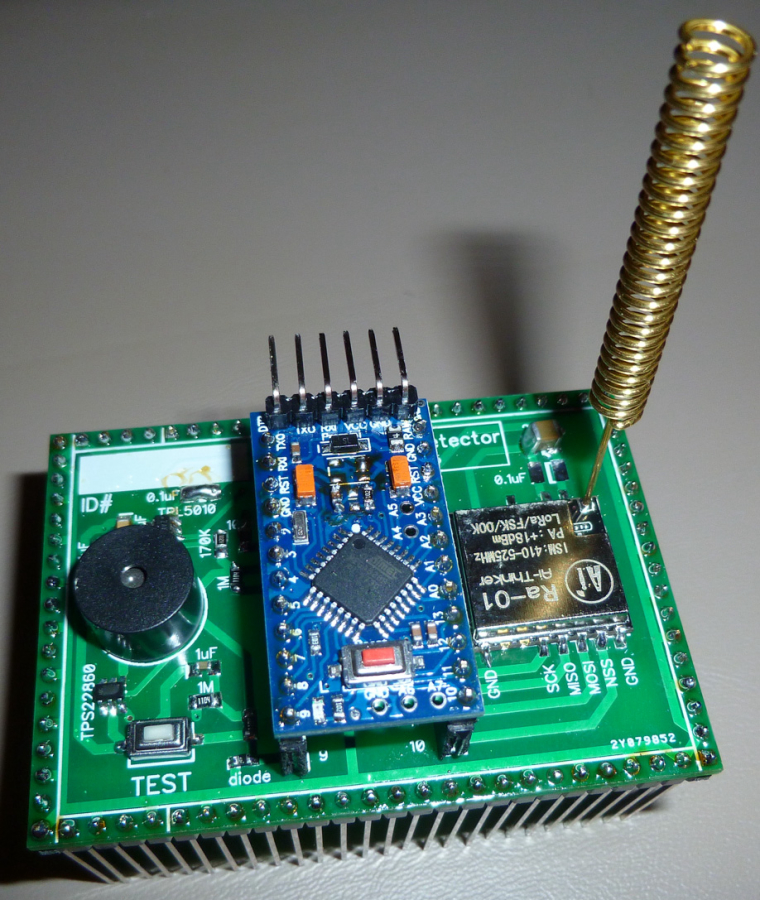
Thanks to an external watchdog (TPL5010), it consumes very little current while sleeping. Also, the external watchdog will reboot the pro mini should it ever become unresponsive, so, in addition, it should be highly reliable. -
Assembled and tested final version of LoRa Leak Detector:

Thanks to an external watchdog (TPL5010), it consumes very little current while sleeping. Also, the external watchdog will reboot the pro mini should it ever become unresponsive, so, in addition, it should be highly reliable.@neverdie said in What did you build today (Pictures) ?:
TPL5010
That's a really nice IC, I was looking for something like that but it seems I didn't search with the right keywords.
Thank you for sharing the discovery ! -
Made a simple LoRa node using my CNC:
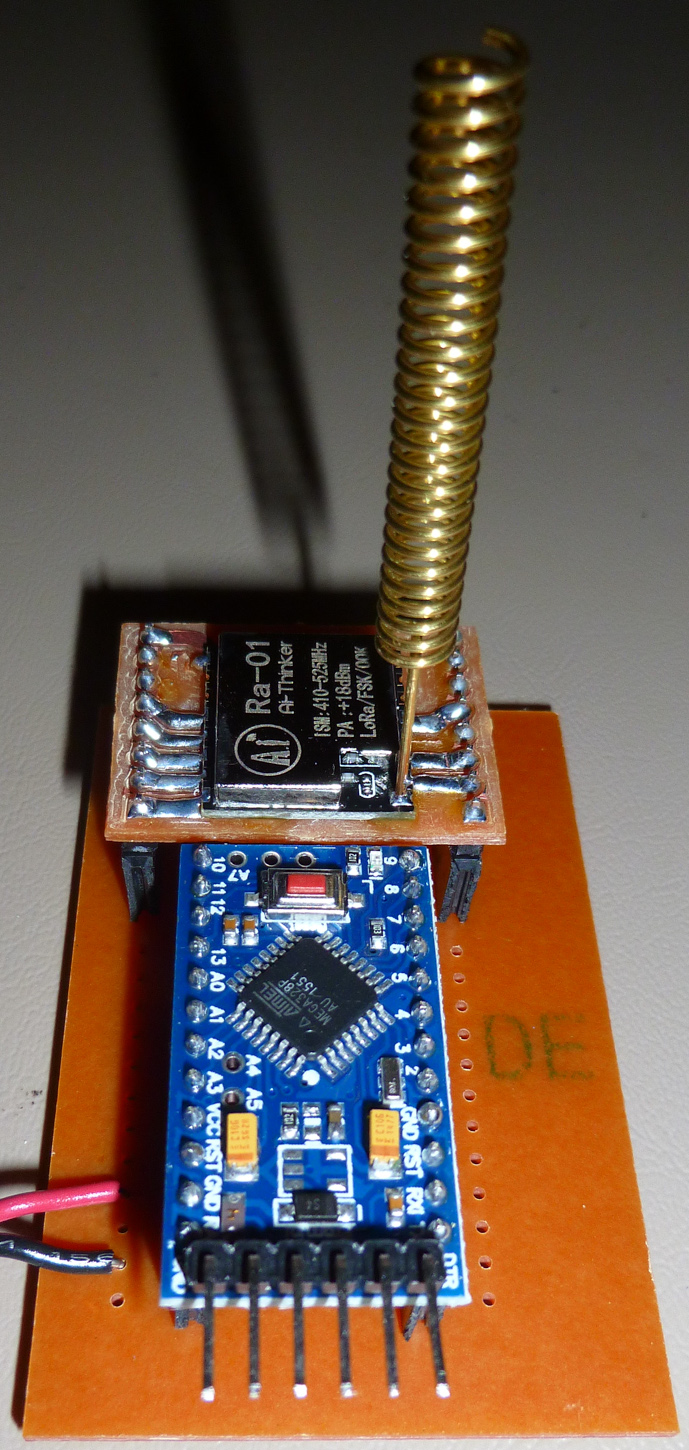
-
Upgraded it to include two AA batteries and a DS18B20 temp sensor. Future versions will tap the I2C pins on the pro mini, so those will have better TH sensors.

Range is noticeably better than when I was running the LoRa from just a breadboard. :)I'm tempted to use a double sided PCB and give the LoRa a more proper and really big ground plane to see if that boosts range even more (at the same power level).
-
Upgraded it to include two AA batteries and a DS18B20 temp sensor. Future versions will tap the I2C pins on the pro mini, so those will have better TH sensors.

Range is noticeably better than when I was running the LoRa from just a breadboard. :)I'm tempted to use a double sided PCB and give the LoRa a more proper and really big ground plane to see if that boosts range even more (at the same power level).
@neverdie You can also consider replicating the 1/4 wave against ground in the opposite direction perhaps? ;)

